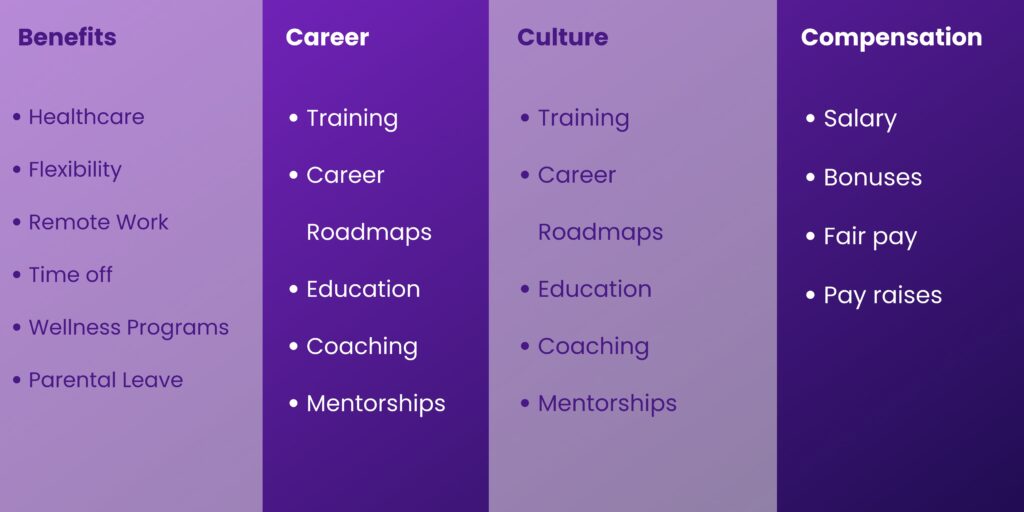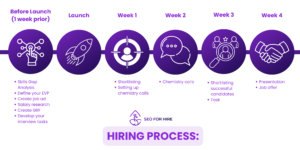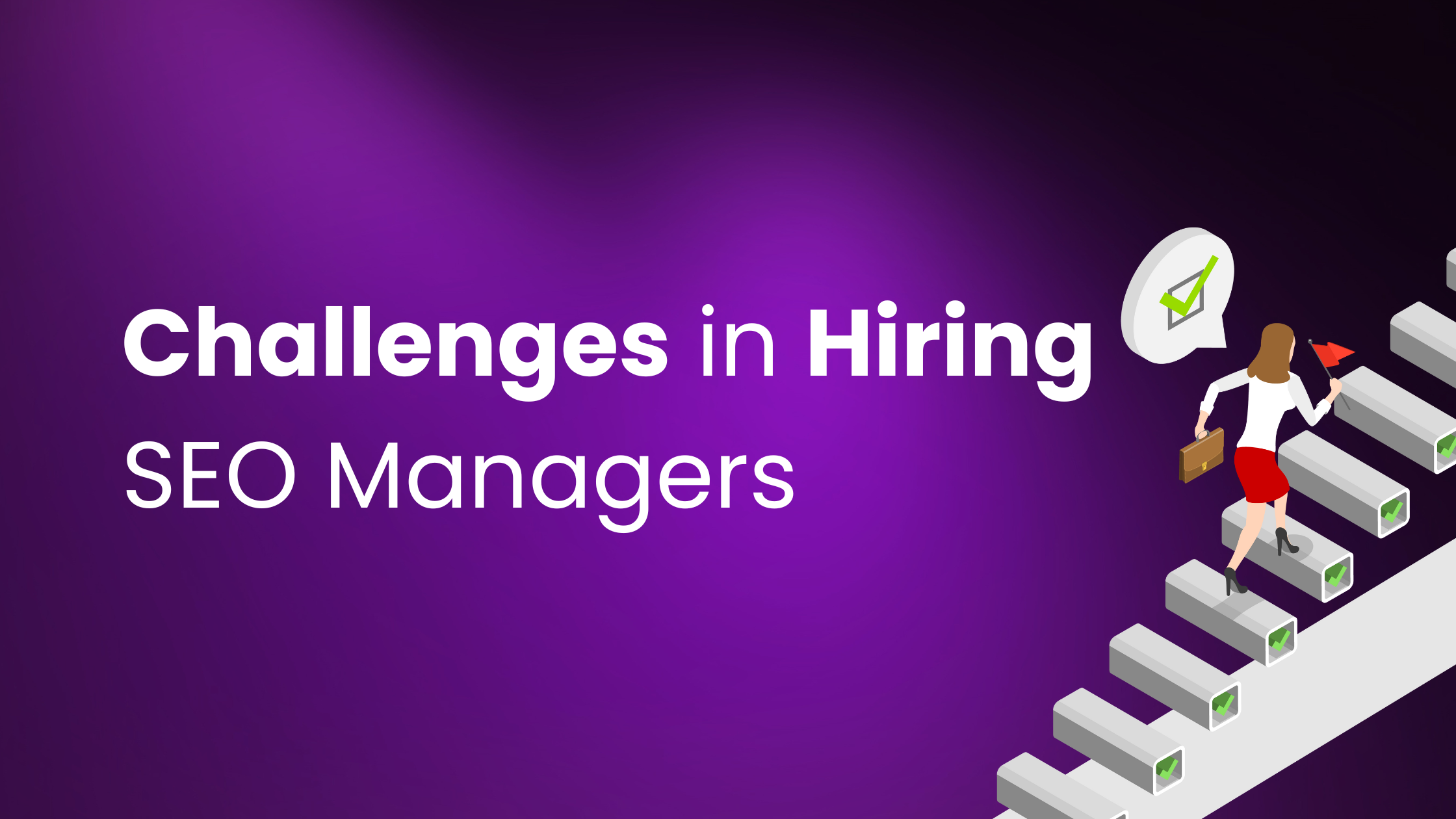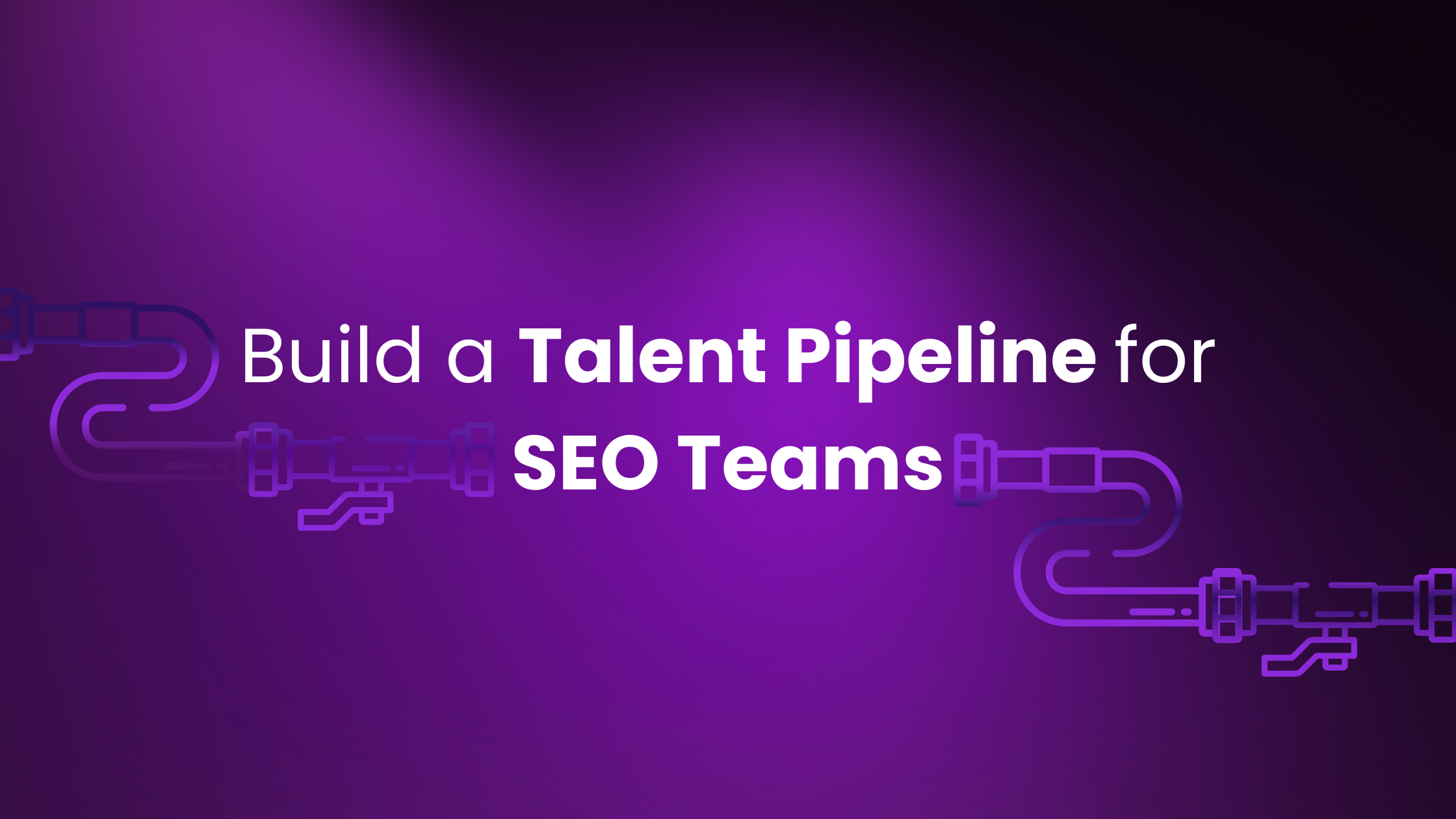Table of Contents
Key Takeaways:
- The average marketing agency turnover rate is around 30% annually
- 88% of job seekers consider the employer brand when applying for a job
- Our free strategy on how we secure talent in a 28 day average placement period
- How to save 18 months of your time
- Save £42,000 to £132,000 by making the right hire
Invest or Get Left Behind
Your competitors are placing a lot of emphasis on the ‘growth’ part of their SEO teams.
For expert insights on how to position your SEO strategy for success, check out How SEOs Can Win Going Into 2025, which explores strategies from industry leaders like Eli Schwartz
Why?
As the SEO landscape evolves, so will the direction for business health–and the constant need for a bigger, diverse and specialised team of SEOs.
We often advise our clients to build your team like a chess board, not checkers.
In checkers, every piece moves the same way.
In chess, each piece has unique moves and strengths.
Your team should be like a chessboard—diverse, specialised, and strategically aligned.
Agencies are placing such rapid emphasis on growing out their teams in order to:
- Drive long-term business growth:
You’re only as strong as your weakest link.A diverse and specialised SEO team–like the pieces on a chessboard–allows for strategic moves that adapt to changing trends.
This will allow for sustainable growth and better business health.
- Stay ahead of your competitors:
As your competitors expand and diversify their SEO teams, focusing on building an elite team ensures you’re not left behind in a rapidly evolving SEO landscape. - Enhance your competitive edge:
As SEO becomes more complex, having a team with varied skills and expertise equips you to outperform competitors and seize new opportunities in the digital space.
From a once-viewed ‘expense’,
Agencies have turned building their SEO teams into an asset–their greatest superpower.
Signs It’s Time to Scale Your SEO Team:
- Overwhelmed capacity: Missed deadlines, quality drops, or overloaded team.
- High client demand: More clients requesting specialised SEO services or larger, complex accounts.
- Emerging opportunities: New SEO trends (e.g., AI, voice search) requiring faster execution and specialised skills.
How do we master the hiring process?
We’re going to take you through a seamless journey of attracting, vetting and hiring the best quality SEOs to join your team.
In doing so, follow in the footsteps of agencies who have created high-performing SEO teams and turned them into their greatest business investments.
First, let’s assess the current landscape to know where we’re at in terms of attracting the best talent.
The Current State of the SEO Job Market
Employee turnover rates play a huge role in impacting your agency’s health.
The average marketing agency turnover rate is around 30% annually.
On average, out of a 24 person team in your agency–8 will be replaced within 12 months.
Think about how much time, resources and motivation is lost in that process?
The problem here?
Aside from the brutal blows to agency health and progression, you’re simply not giving yourself a fighting chance against external factors–such as combating the current state of the economy.
These numbers aren’t here to scare you.
But rather to highlight how much of a focus we should be putting on the ROI of having an all-star team.
Your team is an investment.
AI bots, non applicable applicants, no tried and tested hiring plan all result in a waste of time, money and resource. You wouldn’t set money on fire, so why would you do this inside your business?
So where do we begin?
An important factor in mastering this is your employer branding.
Employer Branding
Employer branding is something that we place a lot of emphasis on.
We often like to compare the idea of employer branding to your Ideal Client Profile, except, this is for your ideal candidate profile.
When developing an employer brand and employer value proposition (EVP), you’ll want to look at:
- What are our company values?
- What is our company culture like?
- What do we do differently to other agencies?
- What big goals and mission does our company have?
- How do we recognise and reward employee contributions?
- How does our leadership support and empower employees?
- How do we prioritise work-life balance and employee well-being?
- What unique perks or benefits set us apart from other employers?
- How do we make our company as attractive as possible to A players?
- What kind of diversity, equity and inclusion initiatives do we have in place?
- What success stories or testimonials can we share from current employees?
- What opportunities for professional development and growth opportunities do we provide?
All these questions and more will help you to understand your ideal candidate, and then craft your branding around that.
When we look at employer branding, we see the direct impact this has on our strongest candidates in our network, and their interest peaks.
They’re ready to make it work to work with you.
This is the effect employer branding has.
That is exactly why, with our clients, we aim to highlight this aspect within, what we term:
The Golden Recruitment Formula (GRF).
We build a private landing page with an interview style questionnaire with the questions above with the owner or leadership team.
We also have a personal video going into depth on the role etc.
We add anything and everything the client has to make the company as attractive as possible like company culture handbooks, career roadmaps etc.
You get the picture.
Additionally, we explore a few of the topics below to assess the culture and benefits:

If you prefer a video, watch our Head of Marketing, Shreya, talk about the key actions points and importance when building your employer branding:
The Vetting Process
Firstly we need to start with our current position and assess your team’s strengths and weaknesses:
- Audit skills: Evaluate core SEO competencies and identify gaps (e.g., international SEO, data analysis).
- Review workflows: Spot inefficiencies and areas where extra support can boost productivity and scalability.
Then we can move onto the actual vetting process for hiring.
Every SEO role is different. Meaning every vetting process has to be different.
We’ll show an example of two very different roles with two very different vetting processes below:
Head of SEO vs. Technical SEO
Head of SEO:
Of course we access their SEO skills.
But we also like to put a lot of focus on:
- Communication:
- How do you explain complex SEO strategies to clients or team members who aren’t familiar with technical jargon?
- Describe a situation where you had to resolve a conflict or disagreement within your team about an SEO strategy.
- How would you manage a stressed client concerned about low conversions?
2. Leadership Style:
- How do you lead a team?
- How do you make sure everyone on the team connects together and understands the full strategy?
3. Business Development:
- How well do they understand a P&L sheet?
- Can they see new business opportunities?
- How strong is their business acumen?
Technical SEO:
We aim to test Technical SEO ability through assessments
- For each of the following URLs, identify a technical SEO issue and suggest a fix
- Please run a SEO site audit on a website of your choice / or the websites listed below and provide the following : List out your process for following the audit, including the tools used and provide a list of some of the technical issues found, as well as suggestions on how to fix them.
Additionally, we also assess for:
- Communication:
- Ability to bring tech SEO language to cross department teams
- Being able to take large complex data and translate into easy to understand communication
2. Problem solving:
- From our experience questions on negative experiences give the best answers and insight on how they handle problems
- Has a website migration ever went wrong? What did you do to fix it?
- Have you ever been negatively impacted by an algorithm update? What happened and how did you fix it?
Shortlisting
Work with speed.
A-Players cannot wait around for months on a reply.
We’ve seen first-hand how quality SEOs will lose interest in a company because the company took too long to provide feedback.
This is viewed as a red flag for them.
Decide when your cut-off date is, and how many candidates you’d like to see.
That should be your deadline to safeguard against this.
In addition to the above, you can also explore the following tactics:
- Include a word or phrase in the job ad to ensure that:
- The application is not done through AI or a generic application.
- The candidate submitting read the job ad thoroughly and fully understands the role.
- The candidate believes that they are a worthy candidate.
- Run it through an ATS to track for certain keywords e.g SAAS experience, competitor analysis.
- Establish your hiring criteria:
- Mandatory:
- Minimum education level
- Proof of relevant experience
- Language fluency
- Training or certifications
- Location
- Preferred:
- Knowledge of relevant software, tools
- Relevant experience that could aid in role’s prospective growth
- Desirable:
- Cultural alignment
- Common visions, missions, goals that could align with the team
- Mandatory:
- Creating a candidate scorecard to help tally the overall scores based off ‘Mandatory’, ‘Preferred’ and ‘Desirable’.
Interview Process
Tip: A great way to find the “serious candidates” is to ask candidates to send a loom video of themselves answering 3 questions ( less than 5 minutes ).
This will give you a quick insight into their personality and if they’re serious about the job.
With the interview process, it’s important to keep it short and sweet.
Ie. There is no point having a 12 step interview process–this is what chases the best candidates away–trust us, this happens.
An ideal interview process includes up to three stages:
1. Chemistry call:
This is where you assess if the candidates are good cultural fits.
First 10 minutes:
Include assessing the CV and covering experience that matches.
If it’s not going well we’ll politely cut it at 10 minutes and of course send feedback.
If it goes well this call will last 30 minutes.
Questions you can ask:
- What motivates you to come to work everyday?
- How do you prefer to collaborate with your colleagues?
- What is your approach to handling poor results for a client?
- What would you look for in us to enable your career aspirations?
- Can you tell us about a time when you had to intervene and change a strategy that another member of your team created?
- Can you describe a time when you explained a complex concept to a non-expert?
You should use the chemistry call to your advantage.
This is an opportunity to sell your company to the candidates.
2. Task:
Give your talent a task that’s put together by your SEO team–a common task that they may face will be ideal.
You will be able to assess their strategic and analytical thinking from this. A task should be no longer than 2-3 hours at max, and ideally paid for.
3. Presentation:
When they complete the task, a third step of presenting to the team could be included for the teammate to meet the rest of the team, as well as show-off more of their soft skills.
Time
“It takes 6 months to find someone, 6 months to find a right fit, 6 months to find a replacement.”
– Steven Bartlett
People underestimate the hiring process–it’s so much more than putting up a quick job ad.
- Your interview structure needs to be relatively quick. With that, you need to gather as much information on your applicant pool as possible.
The difference between choosing candidate A over candidate B, or vice versa, could mean a LOT of expenses, or a lot of income and abundance.Even though both talents technically ‘fit’ the brief of the job ad, it’s the individual selected whose fate you’re placing in.
To ensure that we move at the best, but safest speed possible to ensure quality candidates are interested, but not messed around with, our simple timeline looks a little like this:

Cost
The financial impact is brutally laid out as follows:
Every time an employee quits, the hiring process costs you at least one half of that employee’s annual salary.
At most, this process can cost you 2X the salary of the employee who quit.
In the cost of a hire, your team will see costs broken down into two categories:
Direct and Indirect Costs.

Cost of a Bad Hire
When bringing on a new teammate incorrectly, a company can experience the following costs incurred:
- Monetary Loss:
- A bad hire can cost companies up to 30% of the employee’s first-year earnings. For a position with a salary of $80,000, this equals $24,000 in lost costs.
- SHRM (Society for Human Resource Management) says a bad hire can cost up to 5 times their salary. This includes recruiting, retraining, and lost productivity.
- Rehiring Costs:
- After a bad hire, companies must re-advertise and interview again. This could cost $7,000 to $15,000 more, depending on the role and industry.
Financial Considerations for Scaling
- Budget for Scaling
- Assess your current budget and revenue growth to determine how much you can allocate to hiring
- Factor in salary, training, tools, and onboarding costs
- Return on Investment (ROI)
- How scaling your team can increase your agency’s capacity, thus driving more revenue
- Case studies or examples of how expanding SEO teams have led to client retention and business growth
If you want the help of a team who have built out 100+ SEO teams for start ups to global fortune 500 teams then you’re in the right place.
Trying to locate and access A players in the ever-changing SEO landscape is nearly impossible. Trying to do this without a specialised partner is impossible.
Book a free strategy call.
We look forward to chatting with you.



